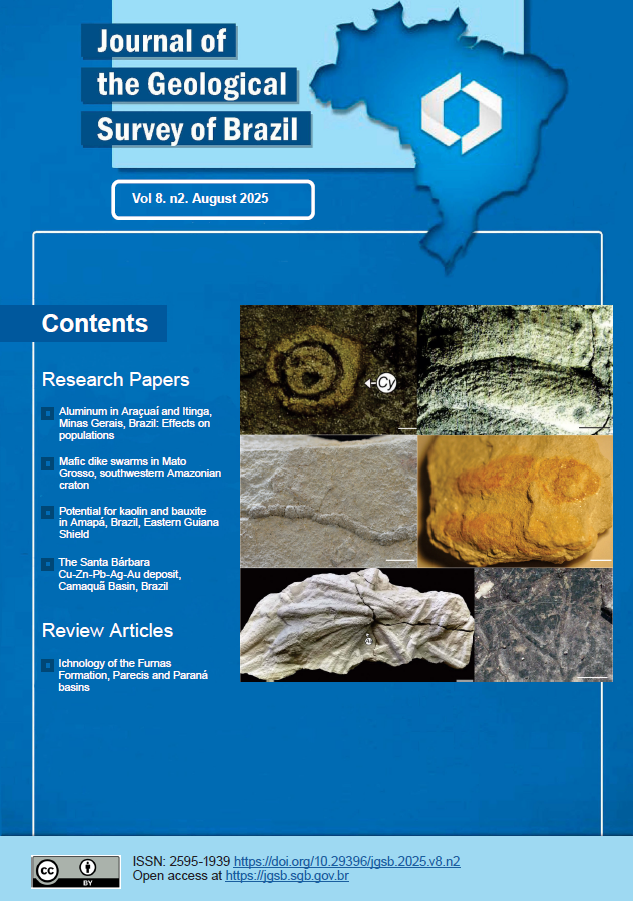Evolution of ichnological knowledge in the Furnas Formation of Parecis and Paraná basins, Brazil
Main Article Content
Abstract
Ichnology provides detailed information on the environmental parameters involved during deposition, serving as a basis for paleoenvironmental interpretations. To this end, ichnological analyses focus on the behavioral aspects represented by ichnoassociations, providing details of the interaction between organisms and the abiotic environment. Ichnological studies in the deposits of the Furnas Formation have been recorded since the early twentieth century, mentioning the presence of "worm tubes". The lack of body fossils and microfossils, except for the top of the formation and the lithological uniformity, has led to extensive discussions about its depositional origin. The palaeodepositional scenario of the Furnas Formation has been highlighted by the recognition of trace fossils, proposing a shallow marine setting for the unit. This review study aims to analysis the evolution of ichnological knowledge and its applicability to paleoenvironmental characterization in the deposits of the Furnas Formation in the Parecis and Paraná basins, Brazil, based on a review of the studies that proposed depositional scenarios for the unit.
Article Details

This work is licensed under a Creative Commons Attribution 4.0 International License.
The papers are published in the open access format, being freely available to any user, under a CC-BY Creative Commons license.
By submitting this manuscript for evaluation, the authors are aware of the CC-BY Creative Commons license. In the case of manuscript approval, the author responsible for the manuscript (corresponding author), hereinafter referred to as CEDENTE (ASSIGNOR), hereby assigns and transfers to CPRM-Serviço Geológico do Brasil, holder of the JGSB, free of charge, on his behalf and on behalf from all co-authors, the right of the first publication. This includes the rights of editing, publication, translation into another language and reproduction by any process, worldwide, today and in the future.
After the first publication by the JGSB, authors hold the copyright without restrictions and are allowed to disclose and distribute their work through personal website pages and institutional repositories.
At the same time, the ASSIGNOR declares that the content of the manuscript is of sole responsibility of the authors and that this content does not infringe the copyrights and/or other property rights of third parties, that is, that any contents of the manuscript and its attachments, if taken from other publications, are duly referenced and, when necessary, the permissions for publications of such contents were requested by the authors from the copyright holders; that the disclosure of images (if any) has been authorized and that it assumes full moral and/or patrimonial responsibility, due to its content, before third parties.





